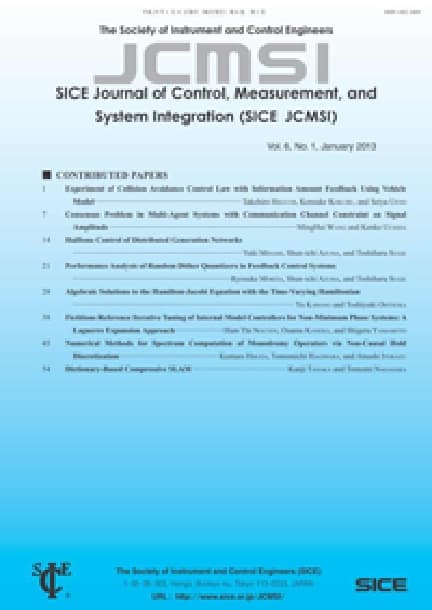Cycling-Based Synthesis of Robust Output Estimators for Uncertain LPTV Systems
Yohei HOSOE, Mitsuaki MIYAMOTO, Tomomichi HAGIWARA
pp. 39-46
DOI:
10.9746/jcmsi.12.39Abstract
This paper studies a method of designing robust output estimators for discrete-time linear periodically time-varying (LPTV) systems with uncertainties. The key idea is to use not the well-known lifting technique but that called cycling for dealing with LPTV systems in the estimator synthesis. Robustness for uncertainties in the estimation is evaluated with the separator-type robust stability theorem through such cycling-based treatment of systems. An advantage of our cycling-based approach, compared to the lifting-based approach, is that we can easily introduce restrictions on the coefficients of estimators in the synthesis for predetermining the estimator period regardless of the system period.









